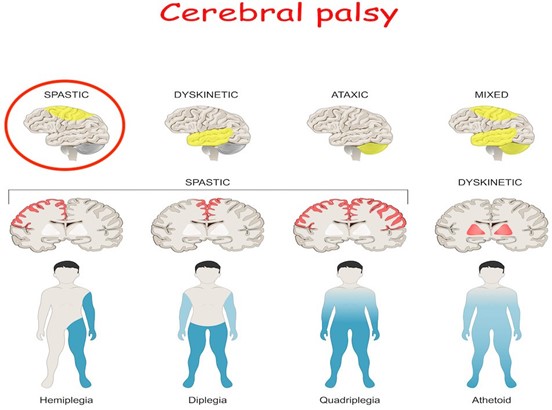A child with cerebral palsy (CP) is taking baclofen, a relaxant. Which assessment finding indicates to the practical nurse (PN) that the drug is effective?
Increased appetite.
Sufficient urinary output.
Fewer temper outbursts.
Decreased muscular spasticity.
The Correct Answer is A
Baclofen is a muscle relaxant that can help relieve muscle spasms and manage conditions such as cerebral palsy¹. An assessment finding that indicates the drug is effective for a child with cerebral palsy would be decreased muscular spasticity. This means that the child's muscles are less stiff and rigid, which can improve their mobility and overall quality of life.
The other choices are incorrect because they are not directly related to the therapeutic effects of baclofen. Baclofen is a muscle relaxant that is used to relieve muscle spasms and stiffness. While it may have other effects on the body, its primary therapeutic effect is to decrease muscular spasticity.
- Increased appetite is not a known effect of baclofen.
- Sufficient urinary output is important for overall health, but it is not directly related to the effectiveness of baclofen.
- Fewer temper outbursts may be an indirect result of decreased muscular spasticity and improved mobility, but it is not a direct effect of baclofen.

Nursing Test Bank
Naxlex Comprehensive Predictor Exams
Related Questions
Correct Answer is A
Explanation
Vitamin tablets are unlikely to cause significant harm to the esophagus if the child vomits after ingesting them. However, toilet bowl cleaner and kerosene are corrosive substances that can cause serious damage to the esophagus and other tissues if ingested.
An unknown substance cannot be evaluated for potential harm to the esophagus.
In any case, the mother should be advised to seek immediate medical attention for her child if they have ingested any potentially harmful substance.
The PN should also follow their facility's policies and procedures for managing cases of poisoning or suspected poisoning.
Correct Answer is B
Explanation
The best indicator to the practical nurse (PN) that the community bicycle safety education program was effective is that the number of students wearing bicycle helmets increased by 10%. Wearing a helmet while riding a bicycle is an important safety measure that can help prevent head injuries in the event of an accident. An increase in the number of students wearing helmets indicates that the program was successful in promoting this safety behavior. The other findings listed may also provide useful information about the effectiveness of the program, but the increase in helmet use is the most direct and measurable indicator of success.
Whether you are a student looking to ace your exams or a practicing nurse seeking to enhance your expertise , our nursing education contents will empower you with the confidence and competence to make a difference in the lives of patients and become a respected leader in the healthcare field.
Visit Naxlex, invest in your future and unlock endless possibilities with our unparalleled nursing education contents today
Report Wrong Answer on the Current Question
Do you disagree with the answer? If yes, what is your expected answer? Explain.
Kindly be descriptive with the issue you are facing.
